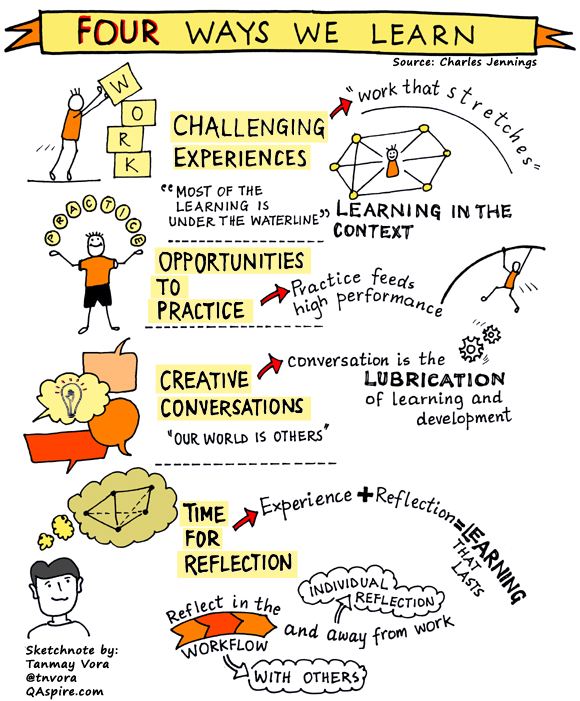Learning: Experience Plus Reflection
Tanmay Vora
“A good starting point for embedding reflection into daily workflow is to approach the practice at two levels; individual reflection, and then reflection with colleagues and team members. Reflective practice itself doesn’t ‘just happen’. It is a learned process. It requires some degree of self-awareness and the ability to critically evaluate experiences, actions and results.”
– The Power of Reflection in an Ever-Changing World, Charles Jennings
I once worked in a team that followed a well established process of doing structured retrospectives after every major product release. This worked well and as a result these reflective exercises, team performance and quality of work improved. Then, speed took its toll. In pursuit of doing more frequent releases, teams stopped doing retrospectives. In the rush to deliver more faster, there was simply no time to reflect and share.
Get Visual Leadership Pack of 50+ HD Sketchnotes
One of the most important ways to build a learning organization is to have rituals that facilitate reflection, sharing and learning individually as well as collectively. In this 2011 post, I recommended three rituals for constant alignment and learning – kickoffs, reviews and retrospectives. Apart from these, daily stand up meetings, team huddles and informal peer to peer communication play a vital role in how a team learns – and more importantly, puts their learning in practice. Done correctly, these rituals can have a powerful impact on team building, quality of work and learning.
In his post, Charles Jennings also outlines four ways we learn (read here). Here is a quick sketch note summary of the learning process.

Related Posts at QAspire
Love to have your learning ability with awesome presentation.